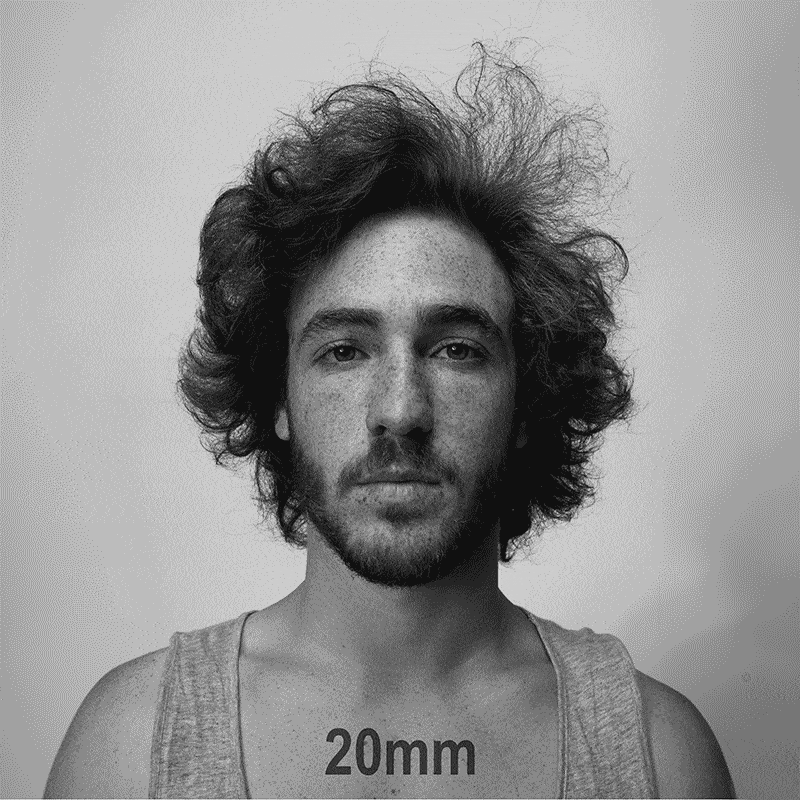From @Ulvain@sh.itjust.works : https://sh.itjust.works/comment/13658165
Additional precisions from @kamen@lemmy.world
It’s important to note that it’s the subject distance that’s the primary factor, not the focal length. The focal length is secondary in that it dictates how far you can be while maintaining the same framing. If you shoot the picture at 200 mm from the example and then without moving you shoot again at 20, you’ll have the same perspective, just way smaller subject in the frame; if you then crop in the picture shot at 20, you’ll have the same framing too, just way less pixels.
If you’re half a metre away from the dude’s nose, you’ll be roughly 60 cm away from his ears (20% more distance), but if you’re 5 metres away from his nose, you’ll be 5.10 m away from his ears (only 2% more distance) - and this is what creates the difference in apparent sizes of the facial features relating to one another.

If this photo had a background other than a blank wall you'd also see the "dolly zoom" also known as "vertigo effect" where the background gets zoomed in while the subject remains the same size. You get it by zooming in as you walk away from the subject. It's also how those photos where the moon appears massive are created. You just need a telephoto lens and you take a "closeup" picture of a person really far away while having the moon on the background.